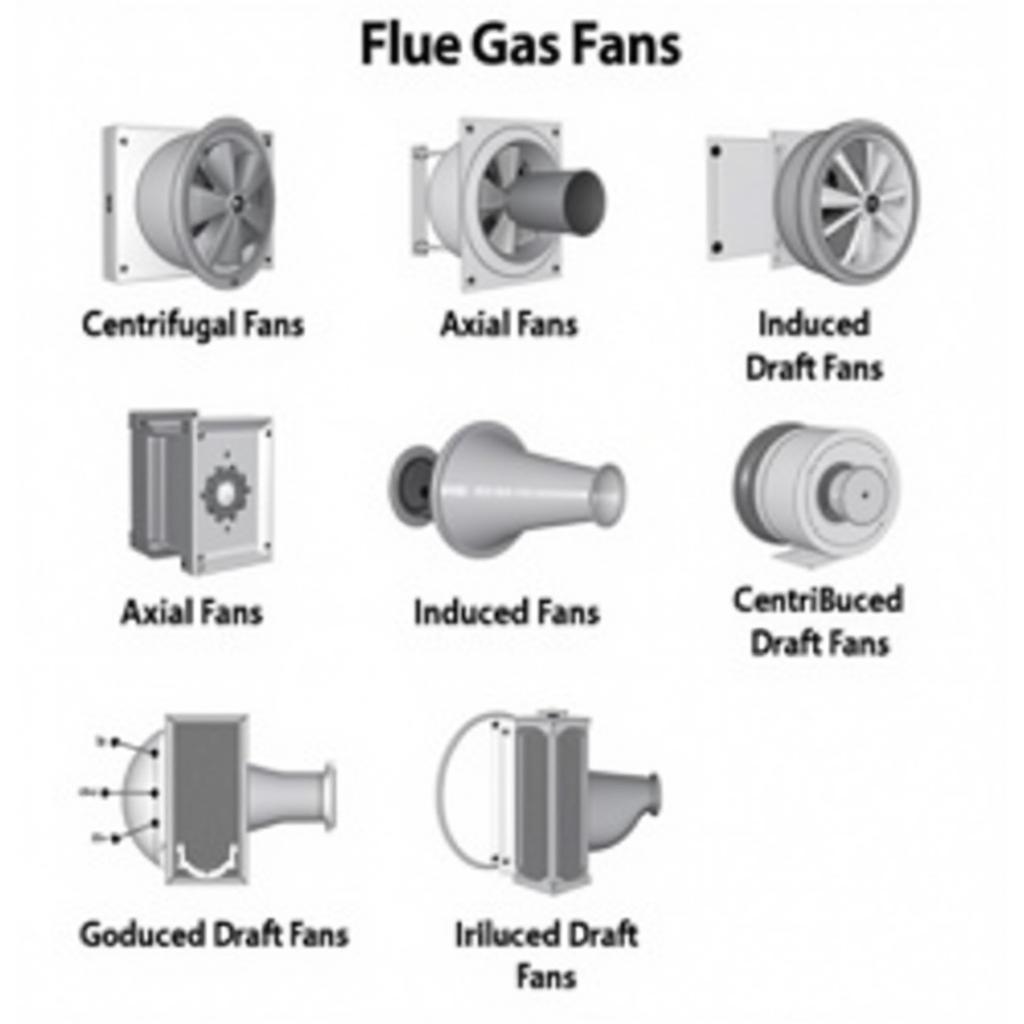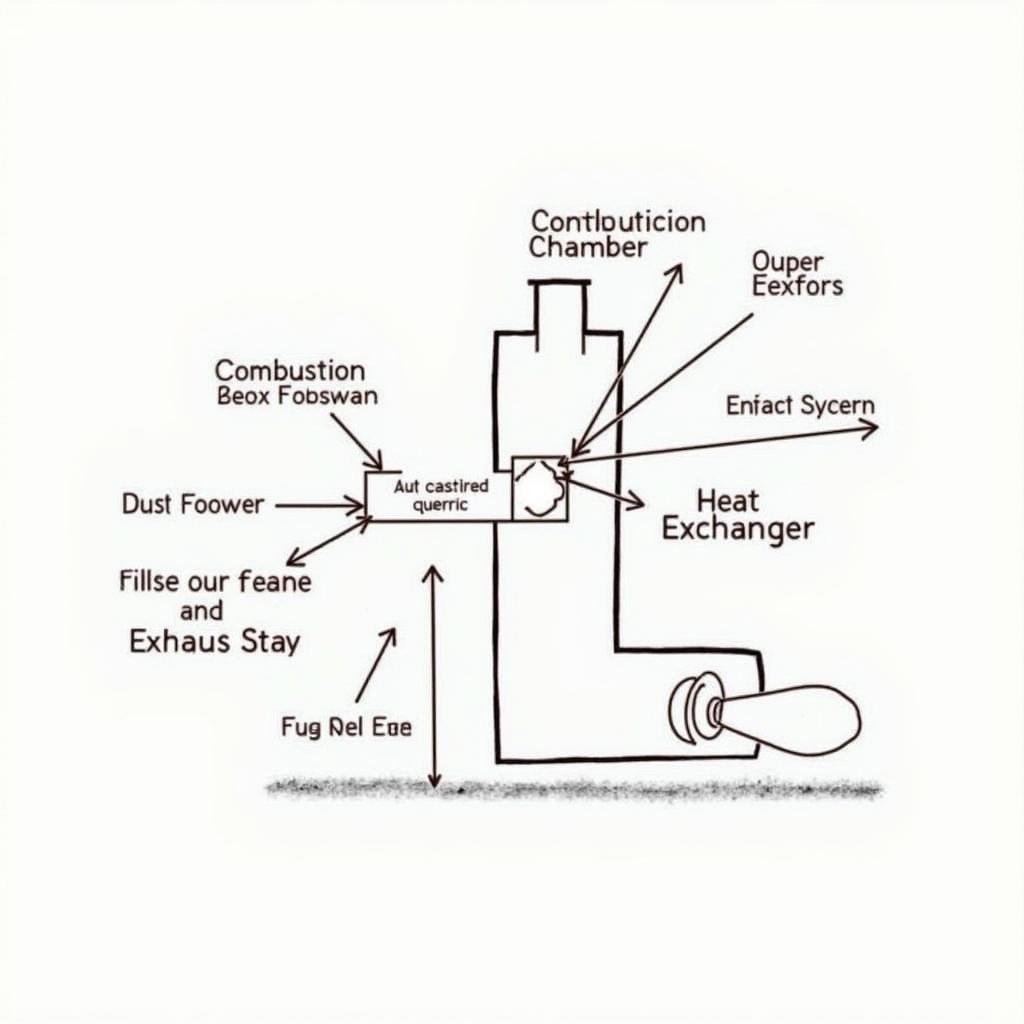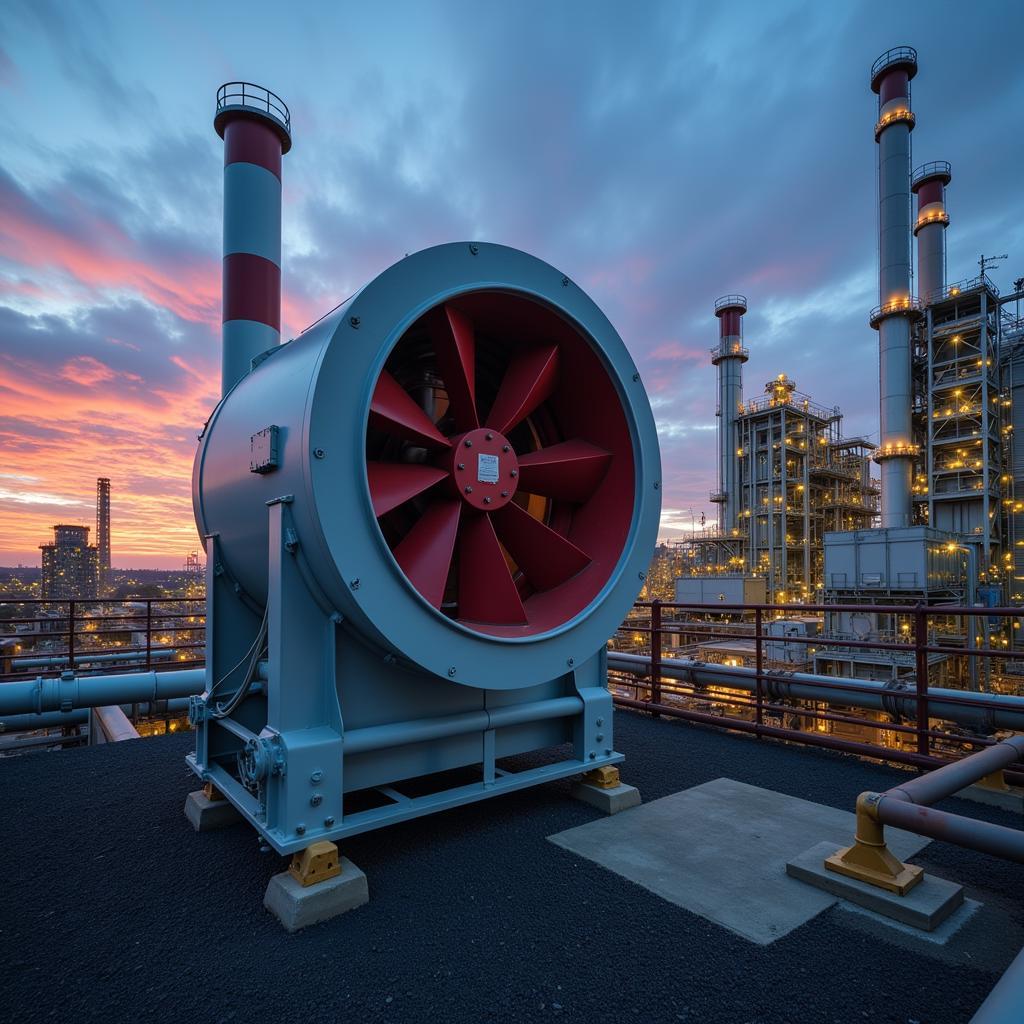Flue Gas Fans And Blowers are essential components of industrial and commercial systems that involve combustion processes. They play a critical role in maintaining optimal combustion efficiency, reducing emissions, and ensuring a safe operating environment.
 Different Types of Flue Gas Fans
Different Types of Flue Gas Fans
Understanding Flue Gas Systems
Before delving into the specifics of flue gas fans and blowers, it’s crucial to understand the systems in which they operate. Flue gas systems are responsible for safely and efficiently removing the byproducts of combustion from industrial processes. These byproducts, known as flue gases, typically consist of carbon dioxide, water vapor, nitrogen, and various pollutants, such as sulfur dioxide and particulate matter.
 Schematic of a Typical Flue Gas System
Schematic of a Typical Flue Gas System
A well-designed flue gas system ensures that these harmful gases are properly vented to the atmosphere, preventing their accumulation in enclosed spaces, which could pose serious health and safety risks. This is where flue gas fans and blowers come into play.
The Role of Flue Gas Fans and Blowers
Flue gas fans and blowers provide the necessary force to move flue gases through the system and expel them into the atmosphere. They create negative pressure within the system, drawing the flue gases from the combustion chamber and pushing them through the exhaust stack.
 Flue Gas Fan Operating in an Industrial Setting
Flue Gas Fan Operating in an Industrial Setting
These fans are specifically designed to handle the unique challenges posed by flue gases, such as high temperatures, corrosive elements, and the presence of particulate matter.
Types of Flue Gas Fans and Blowers
There are several types of flue gas fans and blowers, each suited for specific applications and operating conditions:
-
Centrifugal Fans: These fans utilize a rotating impeller with blades to move air radially. They are known for their high pressure capabilities and efficiency in handling dust-laden gases.
-
Axial Fans: Axial fans, as the name suggests, move air along a central axis. They excel in moving large volumes of air at relatively low pressures and are commonly used in applications with lower resistance to airflow.
-
Induced Draft Fans: Induced draft fans are positioned at the outlet of a flue gas system, pulling the gases through the system and creating negative pressure. They are often used in conjunction with forced draft fans to enhance overall system efficiency.
Key Considerations for Selection
Choosing the right flue gas fan or blower is crucial for ensuring optimal system performance, efficiency, and longevity. Here are some key factors to consider:
-
Flue Gas Composition and Temperature: The chemical composition and temperature of the flue gases are crucial in determining the fan’s material selection and design. High temperatures and corrosive elements may necessitate the use of specialized materials and coatings.
-
Airflow Requirements: The volume of flue gas that needs to be moved per unit of time, typically measured in cubic feet per minute (CFM) or cubic meters per hour (m3/h), is a critical factor in selecting fan size and capacity.
-
System Pressure Drop: The pressure drop across the entire flue gas system, including ductwork, dampers, and other components, must be carefully calculated to ensure the fan can overcome the resistance and maintain adequate airflow.
-
Efficiency and Energy Consumption: Energy efficiency is paramount in today’s industrial landscape. Selecting a fan with high efficiency ratings can lead to significant energy savings over the long term.
Maintenance and Troubleshooting
Proper maintenance is essential for maximizing the lifespan and efficiency of flue gas fans and blowers. Regular inspections, cleaning, and lubrication are crucial for preventing premature wear and tear.
Here are some common troubleshooting tips for flue gas fan issues:
-
Excessive Vibration: Vibration can be a sign of imbalance, misalignment, or bearing wear. Addressing these issues promptly can prevent further damage and downtime.
-
Overheating: Overheating can occur due to insufficient airflow, improper lubrication, or motor problems. It’s essential to identify and rectify the root cause to prevent motor burnout.
-
Reduced Airflow: Reduced airflow can be caused by blockages in the system, fan blade damage, or wear and tear on internal components.
Conclusion
Flue gas fans and blowers are indispensable components of industrial and commercial systems that rely on combustion processes. Their proper selection, operation, and maintenance are crucial for ensuring efficient combustion, minimizing emissions, and maintaining a safe working environment. By understanding the different types of fans, key selection criteria, and common troubleshooting tips, operators can ensure optimal system performance and longevity.
Frequently Asked Questions
- What is the difference between a flue gas fan and a blower?
- How often should flue gas fans be inspected?
- What are the signs of a failing flue gas fan?
- How can I improve the efficiency of my flue gas system?
- What are the environmental regulations related to flue gas emissions?
- What are the latest advancements in flue gas fan technology?
- Where can I find qualified technicians for flue gas fan maintenance and repair?
Need assistance with your flue gas fan system? Contact us today! Our team of experts is available 24/7 to provide guidance and support.
Phone: 0903426737
Email: fansbongda@gmail.com
Address: Tổ 9, Khu 6, Phường Giếng Đáy, Thành Phố Hạ Long, Giếng Đáy, Hạ Long, Quảng Ninh, Việt Nam.


